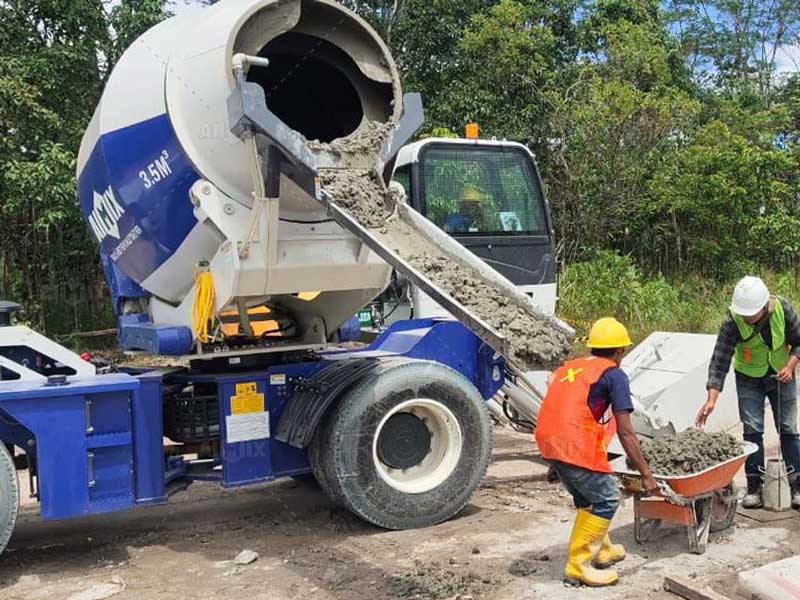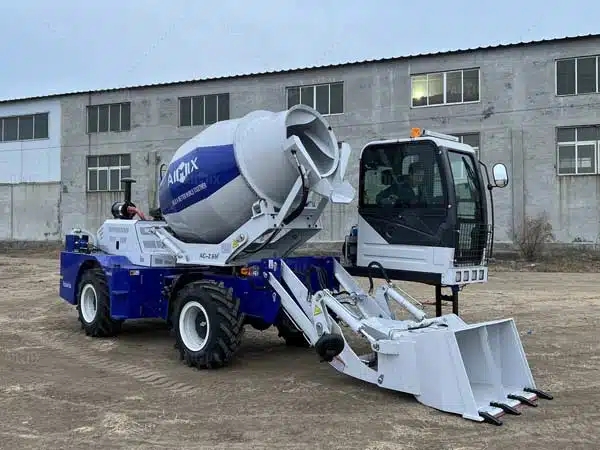In the dynamic landscape of construction, the choice between self-loading concrete mixers and traditional mixers can significantly impact project efficiency and costs. This article delves into the intricacies of these two concrete mixing technologies, analyzing their features, advantages, and drawbacks to assist construction professionals in making informed decisions.
The Evolution of Concrete Mixing Technologies
Concrete mixers have undergone a notable evolution, with traditional drum mixers giving way to the innovation of self loading concrete mixer for sale Philippines. Understanding the fundamental differences is crucial for selecting the most suitable option for construction projects in the Philippines.
The Prowess of Traditional Mixers
Traditional concrete mixers, characterized by rotating drum mechanisms, have been the stalwart of the construction industry for decades. Their simplicity and reliability have made them a familiar sight on construction sites worldwide.

Advantages of Traditional Mixers
Traditional mixers excel in handling large volumes of concrete with a straightforward operational approach. Their proven design ensures consistency in mixing quality, making them a go-to choice for many construction projects. With a variety of sizes available, traditional mixers cater to diverse project scales.
Drawbacks of Traditional Mixers
However, traditional mixers come with limitations. Loading and unloading materials can be labor-intensive, and their mobility is often restricted. Additionally, they may require a separate loader, adding to the overall equipment footprint on the construction site.
The Rise of Self-Loading Mixers
Self-loading concrete mixers, a more recent entrant to the construction scene, bring automation and versatility to the mixing process. These mixers integrate a self-contained loading and mixing system, redefining the efficiency of on-site concrete production. Learn some details about self mixer here: https://concretemixerwithpump.com/self-loading-concrete-mixer-with-pump/.

Advantages of Self-Loading Mixers
Self-loading mixers shine in their ability to load, mix, and discharge concrete on-site, reducing the need for additional equipment. Their mobility and agility make them suitable for projects with varied concrete demands. The integrated design streamlines operations, enhancing efficiency and reducing labor requirements.
Drawbacks of Self-Loading Mixers
While self-loading mixers offer impressive features, they may come at a higher initial cost compared to traditional mixers. Their complexity also requires skilled operators, and ongoing maintenance is crucial to ensure optimal performance.
Key Considerations for Philippine Construction Projects
The Philippines, with its diverse construction landscape, requires a nuanced evaluation of the benefits and drawbacks of both self-loading and traditional concrete mixers.
Project Scale and Scope
The scale and scope of a construction project play a pivotal role in choosing the appropriate mixer. For large-scale projects with consistent concrete demands, traditional mixers may offer a cost-effective solution. Conversely, self loading mobile concrete mixers excel in projects with varying concrete requirements and tight timelines.
Site Accessibility and Mobility
The topography and accessibility of construction sites in the Philippines vary widely. Self-loading mixers, with their maneuverability and on-site loading capability, prove advantageous in locations with limited access. Traditional mixers, while reliable, may face challenges in confined or remote areas.
Operational Efficiency and Labor Optimization
Efficient concrete mixing involves not just the technology but also the manpower required. Self-loading mixers, with their automated loading and mixing processes, can optimize labor resources. Traditional mixers, while reliable, may necessitate additional personnel for material handling.
Cost Considerations and ROI
The decision between self-loading and traditional mixers ultimately boils down to the financial aspect. While self-loading mixers may have a higher upfront cost, their operational efficiency and versatility can contribute to a quicker return on investment, especially in projects with dynamic concrete requirements.
In conclusion, the choice between self-loading and traditional concrete mixers in the Philippines hinges on a comprehensive analysis of project needs, site conditions, and budget constraints. Each technology brings its own set of advantages and drawbacks, and understanding these nuances is essential for making informed decisions that align with the unique demands of construction projects in this dynamic and diverse environment.
